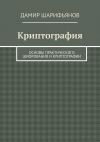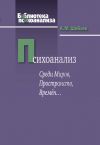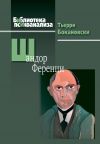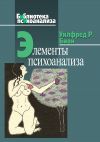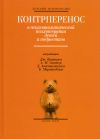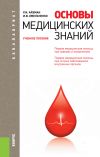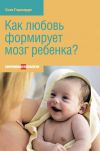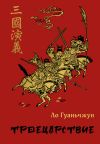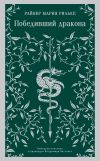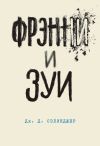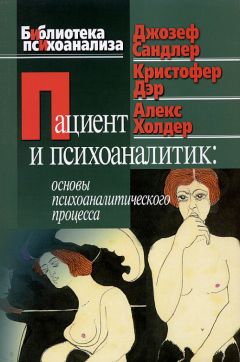
Автор книги: Джозеф Сандлер
Жанр: Зарубежная психология, Зарубежная литература
Возрастные ограничения: +16
сообщить о неприемлемом содержимом
Текущая страница: 17 (всего у книги 17 страниц)
NOVEY, S. (1962). The principle of «working through» in psychoanalysis // Journal of the American Psychoanalytic Association, 10, 658–676.
NOVEY, S. (1968). The Second Look. Baltimore, MD: Johns Hopkins Press.
NOVICK, J. (1970). The vicissitudes of the «working alliance» in the analysis of a latency girl // The Psychoanalytic Study of the Child, 25: 231–256.
NOVICK, J. (1980). Negative therapeutic motivation and negative therapeutic alliance // The Psychoanalytic Study of the Child, 35: 299–320.
NUNBERG, H. (1920). The course of the libidinal conflict in a case of schizophrenia // Practice and Theory of Psycho-Analysis. – N.Y.: International Universities Press.
NUNBERG, H. (1951). Transference and reality // International Journal of Psycho-Analysis, 32: 1–9.
OFFENKRANTZ, W., TOBIN, A. (1978). Problems of the therapeutic alliance: analysis with simultaneous therapeutic and research goals // International Review of Psycho-Analysis, 5: 217–230.
OGDEN, Т.Н. (1983). The concept of internal object relations // International Journal of Psycho-Analysis, 64: 227–241.
OLINICK, S.L. (1954). Some considerations of the use of questioning as a psychoanalytic techniqie // Journal of the American Psychoanalytic Association, 2, 57–66.
OLINICK, S.L. (1964). The negative therapeutic reaction // International Journal of Psycho-Analysis, 45: 540–548.
OLINICK, S.L. (reporter) (1970). Panel: Negative therapeutic reaction // Journal of the American Psychoanalytic Association, 18, 665–672.
OLINICK, S.L. (1978). The negative therapeutic reaction: a retrospective fifteen years later // Journal of the Philadelphia Association for Psychoanalysis, 5: 165–176.
OLINICK, S.L., POLAND, W.S., GRIGG, K.A., GRANATIR, W.L. (1973). The psychoanalytic work ego: process and interpretation // International Journal of Psycho-Analysis, 54: 143–151.
ORNSTEIN, P., ORNSTEIN, A. (1980). Formulating interpretations in clinical psychoanalysis // International Journal of Psycho-Analysis, 61: 203–211.
ORR, D.W. (1954). Transference and countertransference: a historical survey // Journal of the American Psychoanalytic Association, 2, 621–670.
O’SHAUGHNESSY, E. (1983). Words and working through // International Journal of Psycho-Analysis, 64: 281–289.
PARKIN, A. (1981). Repetition, mourning and working through // International Journal of Psycho-Analysis, 62: 271–281.
PERSON, E. (1983). Women in therapy: therapist gender as a variable // International Review of Psychoanalysis, 10: 193–204.
PERSON, E. (1985). The erotic transference in women and men: differences and consequences // Journal of the American Academy of Psychoanalysis, 13, 159–166.
PICK, I.B. (1985). Working through in the countertransference // International Journal of Psycho-Analysis, 66: 157–166.
POLAND, W.S. (1988). Insight and the analytic dyad // Psychoanalytic Quarterly, 57, 341–369.
PRESSMAN, M. (1969a). The cognitive function of the ego in psychoanalysis: I. The search for insight // International Journal of Psycho-Analysis, 50: 187–196.
PRESSMAN, M. (1969b) The cognitive function of the ego in psychoanalysis: II. Repression, incognizance and insight formation // International Journal of Psycho-Analysis, 50: 583–588.
RACKER, H. (1953). A contribution to the problem of countertransference // International Journal of Psycho-Analysis, 34: 313–324.
RACKER, H. (1957). The meanings and uses of countertransference // Psychoanalytic Quarterly, 26, 303–357.
RACKER, H. (1968). Transference and Countertransference. – N.Y.: International Universities Press. [Reprinted Lndn: Karnac Books, 1986.]
RANGELL, L. (1955). On the psychoanalytic theory of anxiety // Journal of the American Psychoanalytic Association, 3, 389–414.
RANGELL, L. (1968). A point of view on acting out // International Journal of Psycho-Analysis, 49: 195–201.
RANGELL, L. (1981). From insight to change // Journal of the American Psychoanalytic Association, 29, 119–141.
RANGELL, L. (1985). Defense and resistance in psychoanalysis and life // H.P. Blum (Ed.), Defense and Resistance. – N.Y.: International Universities Press.
RAPAPORT, D. (1959). A historical survey of ego psychology // E. Erikson, Identity and the Life Cycle – N.Y.: International Universities Press.
RAPAPORT, E.A. (1956). The management of an erotized transference // Psychoanalytic Quarterly, 25, 515–529.
REED, G.S. (1987). Scientific and polemical aspects of the term «transference neurosis» in psychoanalysis // Psychoanalytic Inquiry, 7, 465–483.
REED, G.S. (1990). A reconsideration of the concept of transference neurosis // International Journal of Psycho-Analysis, 71: 205–217.
REICH, A. (1951). On countertransference // International Journal of Psycho-Analysis, 32: 25–31.
REICH, A. (1960). Further remarks on countertransference // International Journal of Psycho-Analysis, 41: 389–395.
REICH, W. (1928). On character analysis // R. Fliess (Ed.), The Psycho-Analytic Reader. – Lndn.: Hogarth Press, 1950.
REICH, W. (1929). The genital character and the neurottic character // R. Fliess (Ed.), The Psycho-Analytic Reader. – Lndn.: Hogarth Press, 1950.
REICH, W. (1933). Charakteranalyse. – Vienna: private publication. REICH, W. (1934). Psychischer Kontakt und vegetative Stroemung. – Copenhagen: Sexpol Verlag.
REID, J.R., FINESINGER, J.E. (1952). The role of insight in psychotherapy // American Journal of Psychiatry, 108: 726–734.
REIDER, N. (1957). Transference psychosis // Journal of the Hillside Hospital, 6: 131–149.
REXFORD, E. (1966). A survey of the literature // E. Rexford (Ed.), Developmental Approach to Problems of Acting Out. Monographs of the American Academy of Child Psychiatry, No. 1.
RICHFIELD, J. (1954). An analysis of the concept of insight // Psychoanalytic Quarterly, 23, 390–408.
RINSLEY, D.B. (1977). An object relations view of borderline personality // P. Hartocollis (Ed.), Borderline Personality Disorders: The Concept, the Syndrome, the Patient. – N.Y.: International Universities Press.
RINSLEY, D.B. (1978). Borderline psychopathology: a review of aetiology, dynamics and treatment // International Review of Psycho-Analysis, 5: 45–54.
RIVIERE, J. (1936). A contribution to the analysis of the negative therapeutic reaction // International Journal of Psycho-Analysis, 17: 304–320.
ROMM, M. (1957). Transient psychotic episodes during psychoanalysis // Journal of the American Psychoanalytic Association, 5, 325–341.
ROSEN, J. (1946). A method of resolving acute catatonic excitement // Psychiatric Quarterly, 20, 183–198.
ROSEN, J. (1965). The concept of «acting in» // L. Abt & S. Weissman (Eds.), Acting Out: Theoretical and Clinical Aspects. – N.Y.: Grune & Stratton.
ROSENFELD, H.A. (1952). Transference phenomena and transference analysis in an acute catatonic schizophrenic patient // International Journal of Psycho-Analysis, 33: 457–464.
ROSENFELD, H.A. (1954). Considerations regarding the psychoanalytic approach to acute and chronic schizophrenia // International Journal of Psycho-Analysis, 35: 135–140.
ROSENFELD, H.A. (1965a). Psychotic States: A Psychoanalytic Approach. – Lndn.: Hogarth Press.
ROSENFELD, H.A. (1965b). An investigation into the need of neurotic and psychotic patients to act out during analysis // Psychotic States: A Psychoanalytic Approach. – Lndn.: Hogarth Press, 1952. [Reprinted Lndn: Karnac Books, 1986.]
ROSENFELD, Н. A. (1968). Negative therapeutic reaction – Unpublished paper.
ROSENFELD, H. A. (1969). On the treatment of psychotic states by psychoanalysis: an historical approach // International Journal of Psycho-Analysis, 50: 615–631.
ROSENFELD, H.A. (1971). A classical approach to the psychoanalytic theory of the life and death instincts: an investigation into the aggressive aspects of narcissism // International Journal of Psycho-Analysis, 52: 169–178.
ROSENFELD, H.A. (1972). A critical appreciation of James Strachey’s paper on the nature of the therapeutic action of psychoanalysis // International Journal of Psycho-Analysis, 53: 455–461.
ROSENFELD, H.A. (1975). Negative therapeutic reaction // P. Giovacchini (Ed.), Tactics and Technique in Psychoanalytic Therapy, Vol. 2. – N.Y.: Jason Aronson.
ROTHSTEIN, A. (reporter) (1983). Panel: Interpretation: Toward a contemporary understanding of the term // Journal of the American Psychoanalytic Association, 31, 237–245.
ROUSSILLON, R. (1985). La reaction therapeutique negative du protiste au jeu de construction // Revue francaise de psychoanalyse, 49: 597–621.
RYCROFT, C. (1958). An enquiry into the function of words in the psycholanalytical situation // International Journal of Psycho-Analysis, 39: 408–415.
RYCROFT, C. (1968). A Critical Dictionary of Psychoanalysis. – Lndn.: Thomas Nelson.
RYCROFT, C. (1985). Psychoanalysis and Beyond. – Lndn.: Chatto & Windus.
SALZMAN, L. (1960). The negative therapeutic reaction // J.H. Masserman (Ed.), Science and Psychoanalysis, Vol. 3. – N.Y.: Giune & Stratton. – Pp. 303–313.
SANDLER, J. (1959). On the repetition of early childhood relationships // J. Sandier (Ed.), From Safety to Superego. – N.Y.: Guilford Press, 1987. Lndn: Karnac Books, 1987.
SANDLER, J. (1960a). The background of safety // J. Sandier (Ed.), From Safety to Superego. – N.Y.: Guilford Press, 1987. Lndn: Karnac Books, 1987.
SANDLER, J. (1960b). On the concept of superego // J. Sandier (Ed.), From Safety to Superego. – N.Y.: Guilford Press, 1987. Lndn: Karnac Books, 1987.
SANDLER, J. (1968). Psychoanalysis: an introductory survey // W.G. Joffe (Ed.), What is Psychoanalysis? – Lndn.: Bailliere, Tindall & Cassel.
SANDLER, J. (1969). On the Communication of Psychoanalytic Thought. – Leiden: University Press.
SANDLER, J. (1976). Countertransference and role-responsiveness // International Journal of Psycho-Analysis, 3: 43–47.
SANDLER, J. (1983). Reflections on some relations between psychoanalytic concepts and psychoanalytic practice // International Journal of Psycho-Analysis, 64: 35–45.
SANDLER, J. (Ed.) (1987). Projection, Identification, Projective Identification. – Madison CT: International Universities Press. Lndn: Karnac Books, 1987.
SANDLER, J. (1988). Psychoanalytic technique and «Analysis terminable and interminable» // International Journal of Psycho-Analysis, 69: 335–345.
SANDLER, J. (1990a). Internal objects and internal object relationships // Psychoanalytic Inquiry, 10, 163–181.
SANDLER, J. (1990b). Internal object relations // Journal of the American Psychoanalytic Association, 38, 859–880.
SANDLER, J., DARE, C., HOLDER, A. (1970a). Basic psychoanalytic concepts: I. The extension of clinical concepts outside the psychoanalytic situation // British Journal of Psychiatry, 116: 551–554.
SANDLER, J., DARE, C., HOLDER, A. (1970b). Basic psychoanalytic concepts: III. Transference // British Journal of Psychiatry, 116: 667–672.
SANDLER, J., DARE, C., HOLDER, A. (1970c). Basic psychoanalytic concepts: VIII. Special forms of transference // British Journal of Psychiatry, 117: 561–568.
SANDLER, J., DARE, C., HOLDER, A. (1970d). Basic psychoanalytic concepts: IX. Working through // British Journal of Psychiatry, 117: 617–621.
SANDLER, J., DARE, C., HOLDER, A. (1971). Basic psychoanalytic concepts: X. Interpretations and other interventions // British Journal of Psychiatry, 118: 53–59.
SANDLER, J., DARE, C., HOLDER, A. (1973). The Patient and the Analyst (first edition). – N.Y.: International Universities Press. [Reprinted Lndn: Karnac Books, 1979.]
SANDLER, J., FREUD, A. (1985). The Analysis of Defense – N.Y.: International Universities Press.
SANDLER, J., HOLDER, A., DARE, C. (1970a). Basic psychoanalytic concepts: II. The treatment alliance // British Journal of Psychiatry, 11: 555–558.
SANDLER, J., HOLDER, A., DARE, C. (1970b). Basic psychoanalytic concepts: IV. Counter-transference // British Journal of Psychiatry, 117: 83–88.
SANDLER, J., HOLDER, A, DARE, С. (1970с). Basic psychoanalytic concepts: V. Resistance // British Journal of Psychiatry, 117: 215–221.
SANDLER, J., HOLDER, A., DARE, C. (1970d). Basic psychoanalytic concepts: VI. Acting out // British Journal of Psychiatry, 117: 329–334.
SANDLER, J., HOLDER, A., DARE, C. (1970e). Basic psychoanalytic concepts: VII. The negative therapeutic reaction // British Journal of Psychiatry, 117: 431–435.
SANDLER, J., HOLDER, A., MEERS, D. (1963). The ego ideal and the ideal self // The Psychoanalytic Study of the Child, 18: 139–158.
SANDLER, J., HOLDER, A., KAWENOKA, M., KENNEDY, H. E., NEURATH, L. (1969). Notes on some theoretical and clinical aspects of transference // International Journal of Psycho-Analysis, 50: 633–645.
SANDLER, J., JOFFE, W. G. (1968). Psychoanalytic psychology and learning theory // J. Sandier (Ed.), From Safety to Superego. – N.Y.: Guilford Press, 1987. Lndn: Karnac Books, 1987.
SANDLER, J., JOFFE, W.G. (1969). Toward a basic psychoanalytic model // J. Sandier (Ed.), From Safety to Superego. – N.Y.: Guilford Press, 1987. Lndn: Kamac Books, 1987.
SANDLER, J., JOFFE, W.G. (1970). Discussion of towards a basic psychoanalytical model // International Journal of Psycho-Analysis, 51: 183–193.
SANDLER, J., KENNEDY, H., TYSON, R.L. (1980). The Technique of Child Analysis: Discussions with Anna Freud. – Cambridge, MA: Harward University Press. [Reprinted Lndn: Karnac Books, 1990.]
SANDLER, J., SANDLER, A-M, (1984). The past unconscious, the present unconscious, and interpretation of the transference // Psychoanalytic Inquiry, 4, 367–399.
SAUL, L.J. (1962). The erotic transference // Psychoanalytic Quarterly, 31, 54–61.
SAUSSURE, J de. (1979). Narcissistic elements in the negative therapeutic reaction // Paper to 3rd Conference of the European Psycho-Analytical Federation. – Lndn.
SCHAFER, R. (1976). A New Language for Psychoanalysis. – New Haven, CT; Lndn.: Yale University Press.
SCHAFER, R. (1977). The interpretation of transference and the conditions for loving // Journal of the American Psychoanalytic Association, 25, 335–362.
SCHAFER, R, (1979). The appreciative analytic attitude and the construction of multiple histories // Psychoanalysis and Contemporary Thought, 2: 13–24.
SCHAFER, R. (1980). Narration in psychoanalytic dialogue // Critical Inquiry, 7: 29–53.
SCHAFER, R. (1983). The Analytic Attitude. – N.Y.: Basic Books.
SCHMALE, H.T. (1966). Working through [panel report] // Journal of the American Psychoanalytic Association, 14, 172–182.
SCHON, D.A. (1963). The Displacement of Concepts. – Lndn: Tavistock.
SCHOWALTER, J.E. (1976). Therapeutic alliance and the role of speech in child analysis // Psychoanalytic Study of the Child, 31: 415–436.
SEARLES, H.F. (1961). Phases of patient-therapist interaction in the psychotherapy of chronic schizophrenia // British Journal of Medical Psychology, 34: 160–193.
SEARLES, H.F. (1963). Transference psychosis in the psychotherapy of chronic schizophrenia // International Journal of Psycho-Analysis, 44: 249–281.
SEDLER, M. J. (1983). Freud's concept of working through // Psychoanalytic Quarterly, 52, 73–98.
SEGAL, H. (1962). The curative factors in psychoanalysis // International Journal of Psycho-Analysis, 43: 212–217.
SEGAL. H. (1964). Introduction to the Work of Melanie Klein. – Lndn: Heinemann. [Reprinted Lndn: Karnac Books, 1988.]
SEGAL, H. (1981). Melanie Klein’s technique // The Work of Hanna Segal. A Kleinian Approach to Clinical Practice. – N.Y.: Jason Aronson. [Reprinted Lndn: Karnac Books, 1986.]
SEGAL. H. (1977). Countertransference // International Journal of Psychoanalytic Psychotherapy, 6: 31–37.
SEGAL, H. (1983). Some clinical implications of Melanie Klein’s work // International Journal of Psycho-Analysis, 64: 269–280.
SEGAL, H., BRITTON, R. (1981). Interpretation and primitive psychic processes: a Kleinian view // Psychoanalytic Inquiry, 1, 267–277.
SHANE, M. (1979). The developmental approach to «working through» in the analytic process // International Journal of Psycho-Analysis, 60: 375–382.
SHAPIRO, E.R.. SHAPIRO, R.L., ZINNER, J., BERKOWITZ, D.A. (1977). The borderline ego and the working alliance: indications for family and individual treatment in adolescence // International Journal of Psycho-Analysis, 58: 77–87.
SHARPE, E.F. (1947). The psycho-analyst // International Journal of Psycho-Analysis, 28: 1–6.
SILVERBERG, W.V. (1955). Acting out versus insight: a problem in psychoanalytic technique // Psychoanalytic Quarterly, 24, 527–544.
SILVERMAN, M.A. (1985). Countertransference and the myth of the perfectly analyzed analyst // Psychoanalytic Quarterly, 54, 175–199.
SODRE, I. (1990). Treatment alliances: therapeutic and anti-therapeutic // Paper to Weekend Conference for English-speaking Members of European Societies. – Lndn.
SPENCE, D.P. (1982). Narrative Truth and Historical Truth. – N.Y.: Norton.
SPENCE, D.P. (1986). When interpretation masquerades as explanation // Journal of the American Psychoanalytic Association, 34, 3—22.
SPILL1US, E. (1979). Clinical reflections on the negative therapeutic reaction // Paper to 3rd Conference of the European Psycho-Analytical Federation. – Lndn.
SPILLIUS, E. (1983). Some developments from the work of Melanie Klein // International Journal of Psycho-Analysis, 64: 321–332.
SPILLIUS, E.B. (1988). Melanie Klein Today: Vol. 2, Mainly Practice. – Lndn.: Routledge.
SPITZ, R. (1956). Countertransference: comments on its varying role in the analytic situation // Journal of the American Psychoanalytic Association, 4, 256–265.
SPRUIELL, V. (1983). The rules and frames of the psychoanalytic situation // Psychoanalytic Quarterly, 52, 1—33.
STERBA, R. (1934). The fate of the ego in analytic therapy // International Journal of Psycho-Analysis, 15: 117–126.
STERBA, R. (1940). The dynamics of the dissolution of the transference resistance // Psychoanalytic Quarterly, 9, 363–379.
STERBA, R.F. (1953). Clinical and therapeutic aspects of character resistance // Psychoanalytic Quarterly, 22, 1—20.
STERN, A. (1924). On the Countertransference in psychoanalysis // Psychoanalytic Review, 11, 166–174.
STERN, D. (1985). The Interpersonal World of the Infant. – N.Y.: Basic Books.
STEWART, W.A. (1963). An inquiry into the concept of working through // Journal of the American Psychoanalytic Association, 11, 474–499.
STONE, L. (1961). The Psychoanalytic Situation. – N.Y.: International Universities Press.
STONE, L. (1967). The psychoanalytic situation and transference: postscript to an earlier communication // Journal of the American Psychoanalytic Association, 15, 3—58.
STONE, L. (1973). On resistance to the psychoanalytic process: some thoughts on its nature and motivation // B.B. Rubenstein (Ed.). Psychoanalysis and Contemporary Science, Vol. 2. – N.Y.: Macmillan.
STONE, M. (1980). The Borderline Syndromes. – N.Y.: McGraw-Hill.
STRACHEY, J. (1934). The nature of the therapeutic action of psychoanalysis // International Journal of Psycho-Analysis, 15: 127–159.
STRUPP, H.H. (1960). Psychotherapists in Action. – N.Y.: Grune & Stratum.
SULLIVAN, H.S. (1931). The modified psycho-analytic treatment of schizophrenia // American Journal of Psychiatry, 11: 519–540.
SWARTZ, J. (1967). The erotized transference and other transference problems // Psychoanalytic Forum, 3, 307–318.
SZASZ, T.S. (1963). The concept of transference // International Journal of Psycho-Analysis, 44: 432–443.
TARACHOW, S. (1963). An Introduction to Psychotherapy – N.Y.: International Universities Press.
TARTAKOFF, H.H. (1956). Recent books on psychoanalytic technique: a comparative study // Journal of the American Psychoanalytic Association, 4, 318–343.
THOMAE, H. (1984). Der Beitrag des Psychoanalytikers zur Uebertragung // Psyche, 38: 29–62.
THOMAE, H., KAECHELE, H. (1987). Psychoanalytic Practice. – N.Y.: Springer.
TOWER, L.E. (1956). Countertransference // Journal of the American Psychoanalytic Association, 4, 224–255.
TYLIM, I. (1978). Narcissistic transference and Countertransference in adolescent treatment // The Psychoanalytic Study of the Child, 33. 279–292.
TYSON, P. (1980). The gender of the analyst in relation to transference and countertransference manifestations in prelatency children // The Psychoanalytic Study of the Child, 35: 321–338.
TYSON, R.L. (1986). Countertransference evolution in theory and practice // Journal of the American Psychoanalytic Association, 34, 251–274.
VALENSTEIN, A.F. (1962). The psychoanalytic situation: affects, emotional reliving and insight in the psycho-analytic process // International Journal of Psycho-Analysis, 43: 315–324.
VALENSTEIN, A.F. (1973). On attachment to painful feelings and the negative therapeutic reaction // The Psychoanalytic Study of the Child, 28: 365–392.
VALENSTEIN, A.F. (reporter) (1974). Panel: Transference // International Journal of Psycho-Analysis, 55: 311–321.
VALENSTEIN, A.F. (1983). Working through and resistance to change: insight and the action system // Journal of the American Psychoanalytic Association, 31 (supplement 3), 353–373.
VAN DAM, H. (1987). Countertransference during an analyst's brief illness // Journal of the American Psychoanalytic Association, 35, 647–655.
VAN DER LEEUW, P.J. (1979). Some additional remarks on problems of transference // Journal of the American Psychoanalytic Association, 27, 315–326.
VIANNA, H.B. (1974). A peculiar form of resistance to psychoanalytical treatment // International Journal of Psycho-Analysis, 55: 439–444.
VIANNA, H.B. (1975). A peculiar form of resistance to psychoanalytical treatment: a reply to the discussion by Willy Baranger // International Journal of Psycho-Analysis, 56: 263.
WAELDER, R. (1956). Introduction to the discussion on problems of transference // International Journal of Psycho-Analysis, 37: 367–368.
WALLERSTEIN, RS. (1967). Reconstruction and mastery in the transference psychosis // Journal of the American Psychoanalytic Association, 15, 511–583.
WALLERSTEIN, R.S. (1983). Self psychology and «classical» psychoanalytic psychology: the nature of their relationship // Psychoanalysis and Contemporary Thought, 6: 553–595.
WALLERSTEIN, RS. (1988). One psychoanalysis or many? // International Journal of Psycho-Analysis, 69: 5—21.
WEXLER, M. (1960). Hypotheses concerning ego deficiency in schizophrenia // The Out-Patient Treatment of Schizophrenia. – N.Y.: Grune & Stratton.
WINNICOTT, D.W. (1949). Hate in the countertransference // International Journal of Psycho-Analysis, 30: 69–74.
WINNICOTT, D.W. (1951). Transitional objects and transitional phenomena // Collected Papers: Through Paediatrics to Psycho-Analysis. – Lndn: Tavistock Publications. 1958. [Reprinted Lndn: Karnac Books, 1991.]
WINNICOTT, D.W. (1954). Mctapsychological and clinical aspects of regression within the psychoanalytical set-up // Collected Papers: Through Paediatrics to Psycho-Analysis. – Lndn: Tavistock Publications. 1958. [Reprinted Lndn: Karnac Books, 1991.]
WINNICOTT, D.W. (1955). Clinical varieties of transference // Collected Papers: Through Paediatrics to Psycho-Analysis. – Lndn: Tavistock Publications. 1958. [Reprinted Lndn: Karnac Books, 1991.]
WINNICOTT, D.W. (1960). Countertransference // British Journal of Medical Psychology, 33: 17–21.
WINNICOTT, D.W. (1965). The Maturational Processes and the Facilating Environment. – Lndn.: Hogarth Press. [Reprinted Lndn: Karnac Books, 1990.]
WINNICOTT, D.W. (1971). Playing and Reality. – Lndn: Tavistock Publications.
WOLF, E. (1979). Countertransference in disorders of the self // L. Epstein & A. Feiner (Eds.), Countertransference. – N.Y.: Jason Aronson.
WRYE, H.K., WELLES, J.K. (1987). The maternal erotic transference // International Journal of Psycho-Analysis, 70: 673–684.
WYLIE, H.W., WYLIE, M.L. (1987). The older analysand: countertransference issues in psychoanalysis // International Journal of Psycho Analysis, 68: 343–352.
WYNNE, L., SINGER, M. (1963). Thought disorder and family relations of schizophrenics // Archives of General Psychiatry 9: 191–198, 199–206.
ZELIGS, M. (1957). Acting in // Journal of the American Psychoanalytic Association, 5, 685–706.
ZETZEL, E.R. (1956). Current concepts of transference // International Journal of Psycho-Analysis, 37: 369–376.
ZETZEL, E.R. (1958). Therapeutic alliance in the analysis of hysteria // The Capacity for Emotional Growth. – Lndn.: Hogarth Press, 1970 [Reprinted Lndn: Karnac Books, 1987.]
ZILBOORG, G. (1952). The emotional problem and the therapeutic role of insight // Psychoanalytic Quarterly, 21, 1—24.
Правообладателям!
Это произведение, предположительно, находится в статусе 'public domain'. Если это не так и размещение материала нарушает чьи-либо права, то сообщите нам об этом.